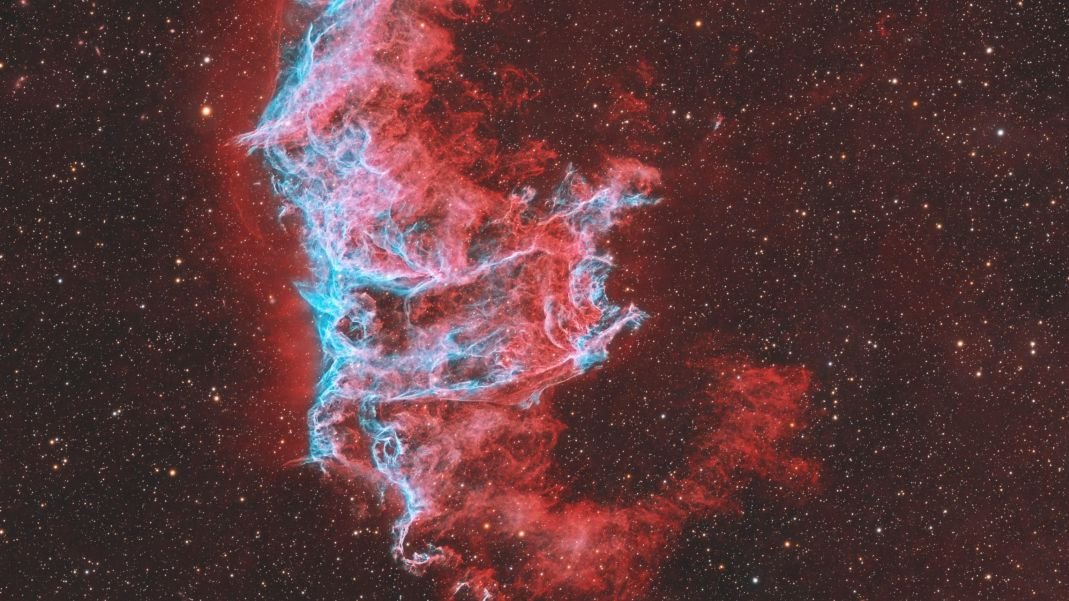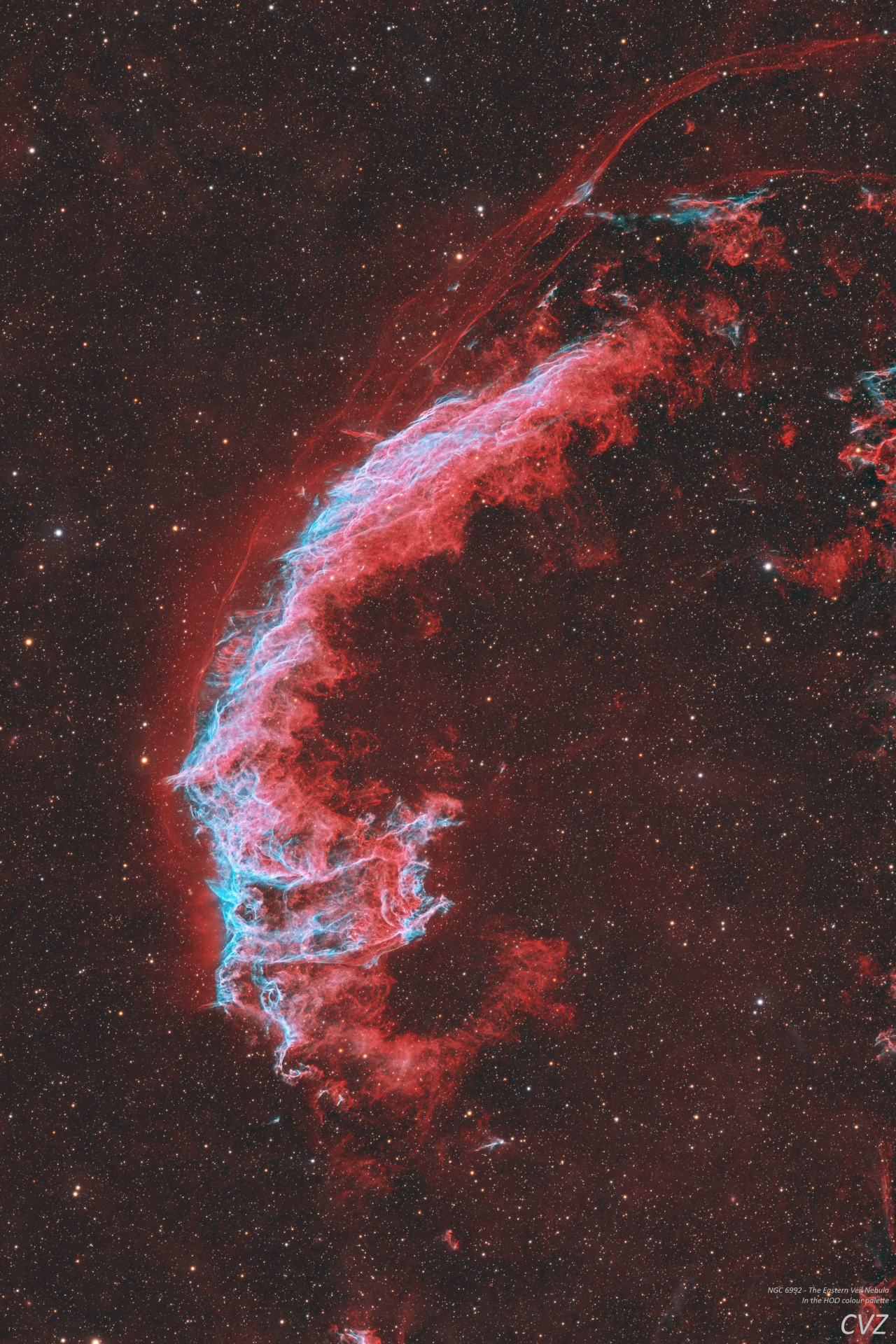
Dutch astrophotographer Cornelis van Zuilen combined 35 hours of telescopic data to create an incandescent view of the Eastern Veil Nebula shining 2,100 light-years from Earth in the constellation Cygnus.
Van Zuilen’s nebula image reveals breathtaking detail in these swirling clouds of interstellar dust and gas, which were cast out into space when a star 20 times more massive than the sun ended its life in a dramatic supernova explosion some 5,000 to 8,000 thousand years ago.
The twisting nebula seen in van Zuilen’s image is just one section of the sprawling 120-light-year-wide supernova remnant, which can be found close to the bright star Epsilon Cygni in the constellation Cygnus along the glowing band of the Milky Way in November.
Due to the weather, the image was a difficult one to capture. “I’m from the Netherlands and we like to joke here that ‘summer is the best day of the year,'” van Zuilen told Space.com in an email. “It rains a lot, so being an amateur astrophotographer is quite a challenging hobby, it requires patience and good timing. Fortunately I live just outside the city in a Bortle 5 area, which really helps with capturing good data through my telescopes.” (The Bortle scale is used to measure the brightness of the night sky, including interference from light pollution.)

Van Zuilen captured the ancient nebula light using an Askar 103APO refractor telescope in conjunction with a ZWO manufactured camera along with an astronomy filter and peripherals as it hung in the Bortle 5 skies over the town of Heiloo in the Netherlands.
“The most challenging part of editing this image was bringing out the faint hydrogen alpha filaments in the northern region of the image,” explained van Zuilen. “That required careful processing with lots of stretching and noise reduction. It took nine nights to capture enough data to see the filaments clearly and a few more to process the final image, but in the end it was absolutely worth the effort.”
Want to take spectacular images of the night sky for yourself? Then be sure to read our roundups of the best cameras and lenses for astrophotography, along with early deals on stargazing gear ahead of Black Friday 2025.
Editor’s Note: If you would like to share your nebula views with Space.com’s readers, then please send your photo, name, location along with any comments on the shoot and details on the gear used to capture it to spacephotos@space.com.
Author: Anthony Wood
Source: Space.com
Reviewed By: Editorial Team



